尺八演奏家 海童道祖 老师的法竹道曲
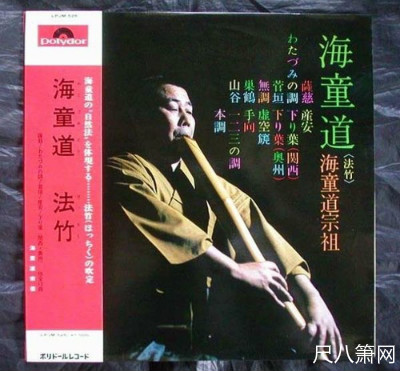
海童道祖(Watazumi Doso Roshi)是近代日本尺八音乐中非常具有代表性的人物。其最重要因素,除了其本身的音乐素养外,另一项重要的原因则是其入室门生-横山胜也。 以下文章介绍其简略生平与其纽约演讲的内容。两年前看过原文,直觉内容并不以尺八为中心,但似乎又息息相关缺一不可。对尺八学习有”根””本”上的帮助,一直想将它翻译成中文, 但自觉无迫切性亦无时间。现有大陆尺八友将其译为中文,而且翻译的很好,特贴上供大家欣赏。
海童道祖的老师是浦本浙潮(1891-1965),而浦本浙潮则是小梨锦水(1861-1931)两位知名的学生之一, 而小梨锦水则是集尺八之大成--神 如道 的几位老师之一。
海童道祖将它使用的尺八称为<法竹>,生平根据他所学习的尺八曲,自行创作约40曲,并称其为<道曲>,而不是所谓的琴古曲. 在Riley Lee博士的文章中曾描述到: 有一个传说,描述海童道一度以其强劲且集中的气流音压,将其尺八一吹为二(吹裂). 这就太太太神奇了 . (原文 One such story relates how Watazumi blew into a shakuhachi with such force and concentration that the bamboo actually split in his hands.)
Born: 1911/11
Died: 1992/12/14
译文由大陆频伽道人论坛的网友索朗多吉翻译.
原文网站联结: http://www.komuso.com/people/Watazumi_Doso_Roshi.html
译文网站联结: http://pinqie.qq.topzj.com/redirect.php?fid=13042&tid=168153&goto=nextnewset
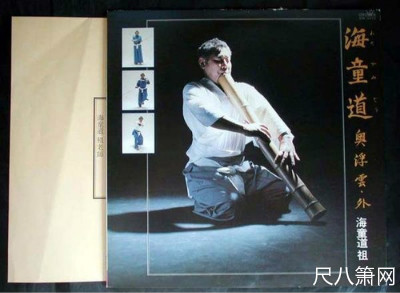
译文
摘译:海童道祖禅师1981年秋在纽约与音乐学生们交流的笔录
Sample Text 这是一份校订过的抄本,其内容是海童道祖禅师1981年秋在纽约伍德斯托克【Woodstock】创意音乐工作室示范演讲时的讲话记录。在那次与大约25个音乐学生的对话中,海童道祖禅师叙述了一些他的哲学和实践中的基本要素。
海童道祖禅师没有把自己视为一个音乐家,他的音乐基于一个不妥协且精神饱满的肉体自律上【uncompromising vigorous physical discipline】。他是一位Jo-stick【一种曰本棍术】的练习者,他用这种长硬木棍子来做伸展运动、练习、按摩和反覆击打,使他的身体充满精力。他每天早上3点半开始这种练习,并把这种练习融入他的曰常摄生法中。他已经连续不断地坚持着这种练习超过3000天了,他的夫人也经常陪伴他一起练习,她这次也来了美国。
海童道祖禅师参加那次交流会的时候已经71岁高龄。他在许多年前学习了禅宗临济宗【Rinzai Zen】,并获得了禅师【Roshi】的头衔。后来他成为了一个Kanjo, 佛教禅宗普化宗【Fuke sect of Zen Buddhism】的统一领导人。为了修习他自己的以呼吸训练和生理精力练习为中心的禅修方式,他在32年前避开了传统组织化的禅宗修行。他指出延长吐气的长度是直接从禅修的训练,也就是呼吸的智慧中继承出来的。【禅宗曹洞宗(Soto –Zen)铃木俊隆禅师(Shunryu Suzuki)的教法精确地强调了延长吐气长度的重要性。请参阅禅者的初心(Zen Mind, Beginners Mind),Weatherhill出版社,纽约,1970年】所以海童道祖禅师的音乐是基于武术和一种与禅修呼吸自我意识相关的精神肉体上的自律。
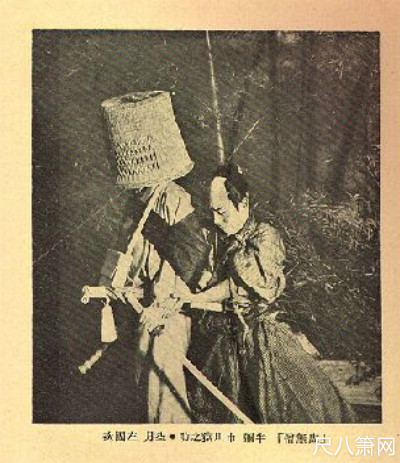
据说在曰本最常见的竹笛箫种类就是尺八,在明治时代【Meiji Period】当佩戴武士刀被禁止后,尺八被一个禅宗宗派的僧侣们作为伪装了的武器来佩戴。普化宗的僧侣们常常一边漫步一边吹着尺八,这种冥想的手段有时可能也是一种间谍活动的掩饰。他们的眼睛和脸隐藏在一个编织的篮子(天盖)后面,而他们的尺八则成为了一种使用便利的棍子。
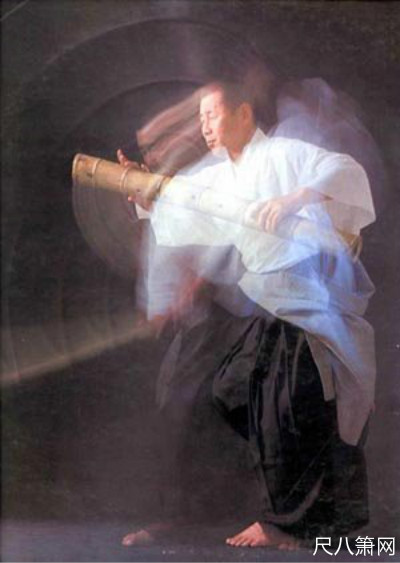
正文:
请大家舒服地坐好。现在我将开始告诉大家一点海童道祖之道。
海童道祖之道来自一个古老的日本词。我在日本出生,并在日本的传统习俗下长大,但是这并不意味你只能在曰本传播与学习此道。如果我在美国或是其他国家出生的话,我仍会教授你们海童道祖之道,但可能会是另一种形式。
你们深深地为音乐着迷这很好,但是如果你们再深入下去就会发现有一种东西比音乐更不可思议。如果你们深入到产生音乐的初始地,会发现一些更有趣的东西。在那里,每个人的个体音乐被创造出来。如果你们问这个神秘的源头在何处,那就是你们自己的生命和明了你们自己的生活,你们自己的生活之道。
海童道祖之道也就是把握你自己的生命力与度,将之训练为更强与更健康。如果你问生命力是什么?生命力从它的本源来说是非常难理解的。你挖得越深见到得越少。但是不管你明白与否,你终将毫无选择地度过你的一生,你终将毫无选择地做一些曰常杂事。所以利用你的曰常生活。利用你每天要做的事来训练加强你的生命力。有许多训练生命力与度的方法,海童道祖从中挑选出5种方法。
第一种基本方法是呼气。这种呼气方式是与你整个生命呼吸系统息息相关的。所以加强你生命力的最有效的方法就是加长你的呼气而不担心你的吸气。呼气的长度至关重要,我们称之为Haku。
第二种是Tsukami,意思是「抓」。在这里指你的手指与脚的动作。是指你手指朝各个方向自由运动的能力。如果某人的手指不能自由运动那就是此人血脉不调,血脉停止生长的征兆。所以当我遇到一个音乐家时,我不用听他的音乐,只要看一下他手指的运动就可以知道他是何种音乐家。所以手指的运动灵活性是极其关键的。但是只强调手指是不够的。你也要注意你的腿和脚趾。你们都穿着包住你们脚和挤压著你们脚趾的鞋与笨重的靴子。所以至少在你脱鞋和泡澡的时候,你应该主动运动你的脚趾,把它们向任何一个方向自由伸展一下。再重复强调一下,如果你们的手指不能朝任意方向完全自由灵活地运动的话,那么你们不可能演奏好你们的乐器。
第三种是Nobasu,意思是「延长」就是拉长你的整个身体。运动你身体上的厚肌肉群很重要。运动你身上最大的肌肉群会牵动所有的小肌肉。所以当你在演奏你的乐器时,不仅仅是你手指的动作,而是你整个身体的运动。
当你在考虑节奏的时候,节奏不仅是节奏,节奏是从你身体里最后一个细胞中产生的整个身体的运动韵律。这种韵律每个人都不同,因为每个人的血流是不同的。如果你观察一下人的脉搏,一个正常人的脉搏在每分钟70下左右。你动得越快,你的脉搏走得越快。德国一位名医埃肯指出每分钟脉搏超过120对身体有危害,但是锻炼身体时每分钟120的脉搏对身体却极其有益。身体在存在的每一刻都必须有5升的血液被泵到身体四处。如果没有那么多的血液被泵到身体四处,那麽我们身体将不会产生任何动作。每个人的身上都会有这种运动。我们必须平衡我们脉搏的运动和我们身体的运动。
音乐的中心是脉搏,所以你通过伸展和练习你身体上的大肌肉群来改进和加强你的脉搏,训练你的脉搏。
当你演奏音乐时,你可能一边看乐谱一边演奏,那并不理想。你不应该感到你必须依靠乐谱来演奏。你在使写在纸上的音乐运动,乐谱和你之间没有区别。所以如果你想提高你的音乐,你必须在所有的方面训练你自己。仅仅演奏音乐只是在复制写在乐谱上的东西,如果你看得深一点,那是你自己的健康,你自己的能量,你自己的力度。训练他们,运动他们是音乐深层次的一面。在海童道祖之道中我们利用声音,但是我们利用声音的初衷是为了生命的健康和力度,进入生命的本质。
现在我们来看一看呼吸。我看见四种方式的呼吸。第一是粗呼吸,第二是强呼吸,然后是轻呼吸和弱呼吸。我们用以上四种呼吸方法来演奏。这四种呼吸方式不是我们的曰常呼吸方式。在曰常中我们用无意识的呼吸方法。无意识的呼吸方法只是肺脏的简单运动。使用无意识呼吸方法给不了你健康和生命力度,你会得病和死亡。所有你必须从无意识的呼吸中走出来,使用有意思呼吸和留意的呼吸。
我猜想可能你们中间大多数吹奏管乐器的人使用某种无意识的呼吸方法来演奏。无意识呼吸方法就像是一潭死水。使用有意识呼吸法就是流水不腐的道理。
我们怎样才能知道某人是用无意识或是有意识呼吸法呢?你可以由某人吸入的氧气量来衡量。人要尽可能多地吸入氧气。当今有3种主要的疾病影响着老年人的健康。第一就是癌症,然后是脑部的病。这些病都是由缺氧所造成的。你必须尽可能多得吸入氧气然后有意识地呼吸。如果你开始有意识地呼吸并训练不同强度的呼吸,那麽你就会发展出你自己个体的音乐。
你们都必须放弃成为一个伟大音乐家或是在音乐上有大成就这种念头。我现在71岁,但是我花了50年的时间来发展一套自己的呼吸方式。所以你们必须有长期的打算,而不是想入非非地幻想在很快的时间内有所成就。
当我用海童道祖之道来训练学生的时候,我先用粗呼吸的方法来训练他们。我马上要示范的这种演奏我不称之为表演或为人吹奏。我称之为精神集中的呼吸。吹只是一个简单的技术动作,我的这种吹不只是简单地吹,是我整个品质和性格的运动。重复一次我说过的,是生命力的运动、从乐器中出来的运动只是你自己的脉搏。海童道祖之道是以声音的形式将你自己的生命力表现出来。
我称这些尺八为Sui Jo Do Gu。 Sui Jo的意思是集中精神的呼吸,Do Gu的意思是工具。我把他们简称为Jogu。在我开始精神集中地吹奏之前,我尽可能精神旺盛地运动我的身体,有很多不同的方式来做到这点。不管你怎么来实现,然后你再吹奏。你用你的双手一起来统一你的呼吸。这不是简单的祈祷或是某种宗教。
为了了解呼吸和更深入地使用呼吸,你必须使用一段天然的竹材。当你使用如此这般天然的竹材时,你才会明白整个自然世界。如果你问明白整个自然世界是什么意思时,当我用一段天然竹材在一片森林里吹奏时不同的动物会围过来。总的来说我吹奏时用的是非常长的长管而不是短管。你会用上很多气来吹奏他们但是出声确非常小。现代乐器是为了用最少的气息来奏出最大的音量来设计的。但是吹奏上面所说的那种竹尺八时,你不必在意出来的音量或是音质。不管出来的音好否,只要你在内部拥有你自己的自由,那你就有改变音质,让他强弱自如的自由。
所以你必须在声音里放入你自己的勇气,你的力度和你的自身特质。你放入的是你自己的生命和生命力。
当你听到一些音乐或是一些声音时,如果出于某些原因你非常喜欢,那是因为那声音和你的脉搏平衡与相和谐。所以制造声音,你应该试着去製造模仿大自然不同类型的声音。但是你最终要制造的是你自己的声音。
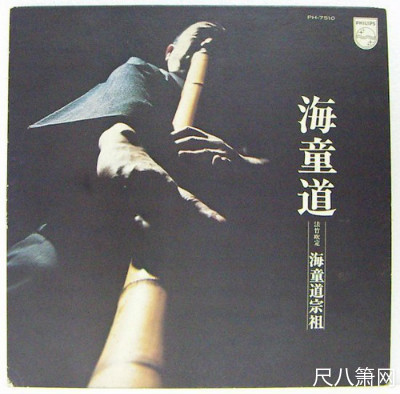
原文:- Biography: Watazumi Doso Roshi -海童道祖 老师
The Way of Watazumi
This is an edited transcript of a lecture/demonstration which was given by Watazumido Doso Roshi at the Creative Music Studio, Woodstock, N.Y., in the fall of 1981. In this conversation with approximately 25 music Students, Doso Roshi describes certain central elements in his philosophy and practice.
Regarding himself as something other than a "musician," he bases his music in an uncompromising vigorous physical discipline. He is a practitioner of the Jo stick, a long hardwood pole with which he stretches, exercises, massages, pounds, and invigorates his body. His Jo Stick practice is part of a daily exercise regimen which begins at 3:30 AM. For over 3,000 consecutive days he has maintained this practice, often accompanied by his wife, who was with him on this American visit.
Doso Roshi was 71 years old at the time that this talk was given. Years ago he studied Rinzai Zen, attaining the title of Roshi, or Master. He later became the Kanjo, the unifying head of the Fuke sect of Zen Buddhism. He shunned traditional organized Zen practice 32 years ago in favor of a practice of his own devising with breath training and vigorous exercise at its core. The lengthening of the Out Breath to which he refers is directly descended from the wisdom of the breath as practiced in Zen. (The Soto-Zen teachings of Shunryu Suzuki Roshi emphasize precisely that lengthening of the Out Breath. See Zen Mind, Beginners Mind, Weatherhill, New York, 1970) So Doso Roshi's music is based in a psychophysical discipline related to Zen breath awareness and to the martial arts.
It is said that the bamboo flute, the most standard variety of which in Japan is called the Shakuhachi, was used by a particular sect of Zen priests as a weapon-in-disguise after the carrying of samurai swords was outlawed in the Meiji period. The priests of the Fuke sect would wander about playing the bamboo flute-a meditative pursuit-but perhaps also a spy's cover, his eyes and face concealed beneath a woven basket, his flute a handy club.
Doso Roshi's comments are translated by Chris Jay with admirable spontaneity. The transcription from tape is by Lucian Burg. Editing of the transcript and these notes are by Stuart Leigh.
Everybody please sit comfortably. And now I will tell a little about the Way of Watazumi.
The Way of Watazumi has come from an old Japanese word. I was born in Japan and the way I live is through Japanese customs, but just because my way was born with me in Japan does not mean that it can only be transmitted or learned in Japan. If I had been born in this county, or any other country, I would still be teaching you the Way of Watazumi, but maybe in a different form.
It's fine that you are all deep into music. But there's something deeper and if you would go deeper, if you go to the source of where the music is being made, you'll find something even more interesting. At the source, everyone's individual music is made. If you ask what the deep place is, it's your own life and it's knowing your own life, that own way that you live.
The Way of Watazumi then is to take your life force, your life strength, and to train it into being stronger and healthier. If you ask what life force is, it's a difficult thing to understand in its essence. The deeper you go, the less you can see what it is. But whether you understand it or not, you still have to get through life; you still have to do your daily things. And so using your daily life, using the things you do all day, we train and strengthen the life force. There are various different ways to train the life force and the life strength. From those various ways, the Way of Watazumi has chosen five ways.
The first basis is breathing out. And that breathing out has to do with the entire system of breathing. So what is most useful to the strength of your life force is lengthening the Out Breath instead of worrying about the In Breath. The lengthening of the out breath is the most important and we call that Haku.
Next we have Tsukami, which means, "to grasp". And that refers to the movement of the fingers and the feet. The ability of your fingers to move freely in any direction. A person who cannot move their fingers freely is indicating already that his blood vessels are stopped up and undeveloped. And so I meet a musician and look at the movement of his fingers I don't even need to hear his playing or his instrument to know what kind of musician he is. So everybody, the movement of the fingers is extremely important. However, just the simple movement of the fingers is not the only thing. You also have to look at the movement of the legs and toes. You all wear around shoes and heavy boots that cramp your feet and cramp the movement of the toes. So, at least, when you have your shoes off and you are taking a bath, you should make extra effort to move your toes around so that they can move in any direction freely. And so to repeat again, if your fingers cannot move freely in any direction with complete alacrity, then there is no way your playing of the instrument can be any good.
The next is called Nobasu, which means "to lengthen." If you ask what to lengthen, it is your entire body. To move the thick muscles of the body, is extremely important. And moving the largest muscle sections in your body will also bring into play all of the smaller muscles. And so, when you are playing an instrument, it's not simply the movement of your fingers or this or that, it's the movement and the action of the entire body.
And when you consider rhythm, rhythm is not just simply rhythm; rhythm is the movement of the entire body from its last cell. And that movement differs from person to person because everybody's flow of blood is different. If you look at a person's pulse, the pulse for a normal person is somewhere around 70. The more you move the faster the pulse becomes. A famous doctor from Germany named Aiken has indicated that a pulse of over 120 per minute is dangerous for the body. And he has said that a pulse of up to 120 through vigorous exercise is extremely beneficial for the body. At one moment in the body there has to be five liters of blood being pumped through. If there is not that much, then we cannot have any action at all. Everybody has that movement within their bodies. You have to balance, then, the movement of your pulse with the movement of your body.
The center of music is the pulse, And so the reason that you stretch and exercise the large muscle sections of your body is to improve and strengthen your pulse; to train your pulse.
When you play music, you might be reading the written music on the page while you are playing, but that's no good. You should not feel that you are depending on the written music in order to play. You are not depending on the music, you are moving that written music yourself and there is no difference, then, between that written music and you. And so you have to train yourself in all aspects in order to be able to do anything good at all with the music. Just doing music is simply reproducing what is written on a score. If you look at it deeper, it is taking your own health, your own power, your own strength, and training it and moving it, which is the deeper aspect of music. In the Way of Watazumi we use sounds, but the reason that we use sounds is to get to the basics of the human life, of the human health and the strength..
Now looking at breathing, I see four different kinds of breathing. Number one is Rough Breathing, and then Strong Breathing, Soft Breathing and Weak Breathing. The kinds of breathing that we use in playing these Jogu flutes are these four. These four kinds of breathing are not the breathing used in normal daily life. What is used in normal daily life is the Unconscious Breathing. Unconscious Breathing is simply the movement of the lungs. But just using the Unconscious Breathing, the simple movement of the lungs, does not bring a person into strength or health. You are sure to become sick or even die. And so you have to move away from Unconscious Breathing and come into Conscious or Mindful Breathing.
I suspect probably that the breathing most of you wind musicians do into your instruments is a certain kind of Unconscious Breathing. Unconscious Breathing is similar to a pool of water that has been stopped up and is sitting there and stagnating. Just like a river that has not been stopped up, the river that flows cleanly and purely, that is how the conscious breathing affects the inside of the body.
How can you tell if a person is breathing unconsciously or mindfully? Now, you can generally tell by the amount of oxygen a person takes in. Human beings have to take in as much oxygen as they possibly can. There are three main sicknesses that seem to affect the older people these days. Number one is cancer. Then there is brain disease. And the reason for these diseases is a lack of oxygen. You have to take in as much oxygen as possible. And taking in as much oxygen as possible, you breathe mindfully. If you begin breathing mindfully and training your breath for the different kinds of strength, then you will develop your own individual music.
You all have to give up the idea of wanting to become good or great at music. I'm 71, but it has taken me 50 years to develop my own kind of breathing. And so instead of wanting to get great really quickly, you have to be willing to work at music for many, many years.
When I train students in the Way of Watazumi, the first thing I train them in is the Rough Breathing. What I'm going to do now I don't call performing or playing for people. Instead I call it the Concentrated Breathing. To blow is just simply a technique. My kind of blowing is not just simply blowing, it's the movement of the entire personality. Just to repeat again what I was saying, the movement of the life force, the movement that comes out of the instrument, is just simply your own pulse. The Way of Watazumi then, is to express in sound your own life force.
What I call these flutes is the Sui Jo Do Gu. Sui Jo means concentrated breathing and Do-Gu means tool. I abbreviate the whole term to Jogu. Before I start with the concentrated blowing, I move my body as vigorously as possible. There are different ways to move your body vigorously. No matter how you do it is O.K. (claps once loudly) You can do something like that. And then you bow. This is not simply praying and some sort of religion. What you do with your hands together is to unify your breath.
In order to understand the breath and to get into the deeper uses of the breath for your own person you have to use a natural piece of bamboo. When you use a piece of bamboo that is as natural as this, then you understand the entire natural world. And if you ask what I mean by understanding the entire natural world, when I play a natural simple piece of bamboo out in the forest, different animals then come around. Generally what I play when I play these flutes are not the tiny ones but the very long flutes. You put in a lot of breath but you get out hardly any sound at all. Modern instruments are designed so that you put in the least breath possible and get out the most sound. But playing this kind of bamboo flute, you don't have to worry about what kind of sound or its quality, whether it sounds good or it sounds bad. So if you have your own freedom on the inside, then you can change the sound freely to make it stronger or softer.
So in that sound you have to put in your balls, your strength and your own specialness. And what you are putting in their, is your own life and your own life force.
When you hear some music or hear some sound, if for some reason you like it very well; the reason is that sound is in balance or in harmony with your pulse. And so making a sound, you try to make various different sounds that imitate various different sounds of the universe, but what you are finally making is your own sound, the sound of yourself.
End of Article
While Watazumi said he had not teachers, some of the following may be true:
Before Watazumi-do was named Watazumi-do, his name was Tanaka Masaru. When he was twenty years old, he studied from a man named Nakamura Kikufu who studied with Sakurai Muteki, who studied with Okamoto Chikugai. He is also said to have studied under Uramoto. From what we have heard he studied with many teachers so it's possible he studied with all of these men as well. He may have also studied with Higuchi Taizan (35th Kansu of the Meian Line), who studied with Miyagawa Nyozan, who studied with Tani Kyochiku.
He is the founder of Ichoken Fukko-ha also known as Myoan Masho-ha.
本文转自台湾山城老师博客:blog.xuite.net/shakuhachi.taiwan
评论列表: